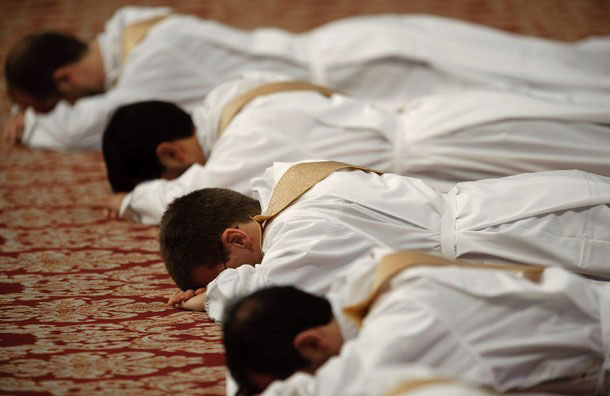With the publication of the document, Pastoral Guidelines for the Promotion of Vocations to the Priestly Ministry, the Congregation for Catholic Education has concluded its 7-year reflection on the centrality of the priestly ministry within the Catholic Church. The new document is meant to relaunch pastoral efforts in this regard.
The text is subdivided into three parts: Part I analyzes the situation of vocations to the priesthood throughout the world; Part II sketches out the identity of the priestly ministry and the vocation proposal relative to it, and Part III offers suggestions for intensifying vocation work in this field.
A look at the statistics presented in the text reveals that from 2000-2010 the number of philosophy and theology students in diocesan seminaries and male religious institutes increased from 80,245 to 82,262 worldwide. The continent with the greatest number of vocations to the priesthood is Asia, which, in the past decade, saw the number of its seminarians rise from 25,174 to 33,282. The data also reveals that traditionally Christian countries (primarily those in Europe) continue to experience a vocation crisis. In fact, the number of philosophy/theology students in these nations dropped from 26,879 to 20,564.
The new document attributes the decline in vocations to the priesthood, above all in the West, to lower demographics, families in crisis, a secularized mentality, a relativistic culture and the difficult conditions of the priestly life and ministry, including the risk of viewing the priest’s role in society as unimportant and irrelevant.

